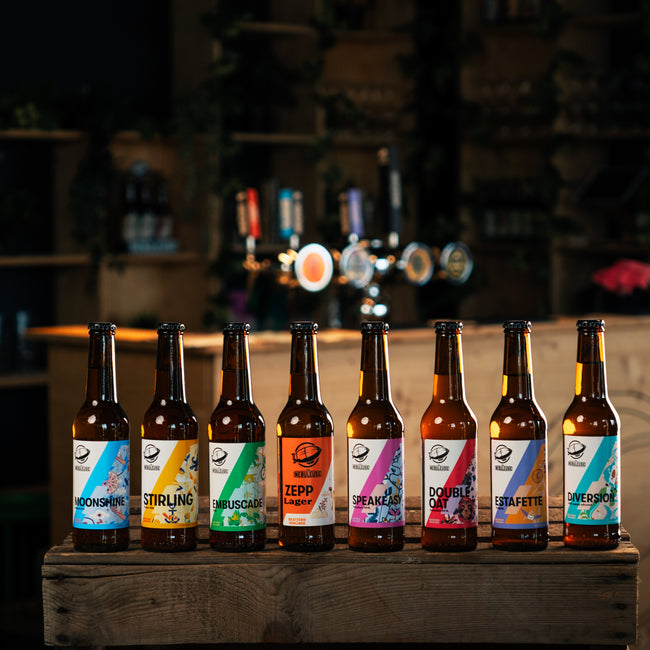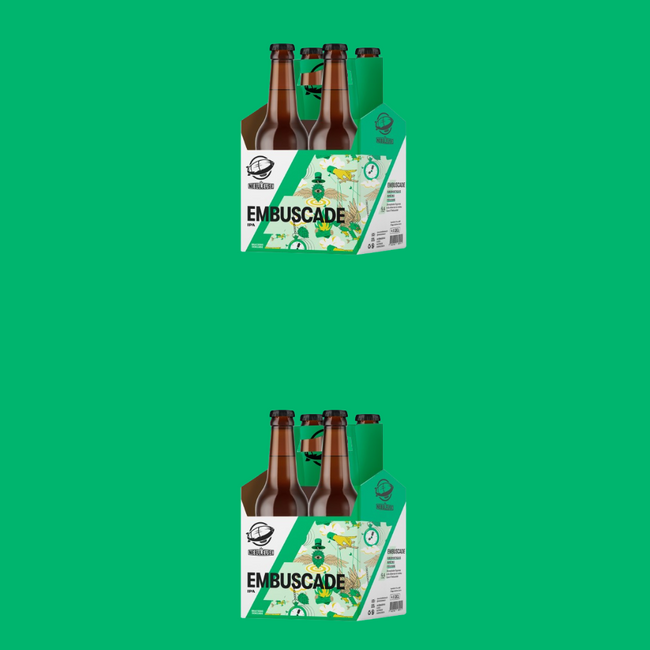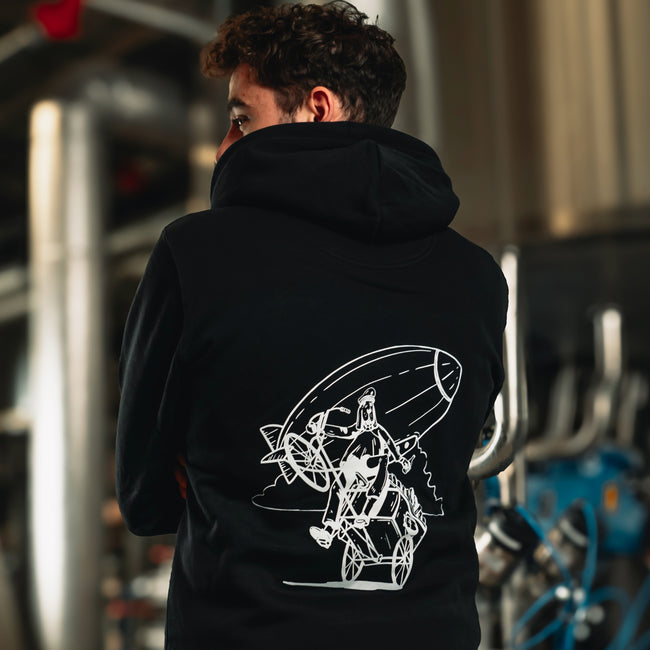The adventure of spicy beers for unique experiences

Spices in beer are a tricky business. Especially when it comes to ghost pepper, the kind of chili that makes Tabasco look like jam. Yet, in the hands of brewers who know what they're doing, even the most intimidating ingredients can yield remarkable creations. Provided, of course, you have the right dosage and a little common sense.
The Subtle Science of Spices in Brewing
The alchemy of spicy flavors
Double Trouble wasn't born out of a lost bet or overexcited Friday night. This 8% ABV Double IPA represents months of development and careful fine-tuning. The goal? To create a beer where the ghost pepper enhances the experience instead of turning it into a test of courage.
Capsaicin, the molecule that gives ghost pepper its characteristic bite, plays a fascinating role in the beer's flavor profile. Its integration requires near-surgical precision—after all, we're talking about a chili pepper capable of making an onion weep. But beyond its legendary heat, ghost pepper also brings fruit notes and aromatic complexity that, when properly mastered, transform a "simple" Double IPA into something unique.
The delicate art of dosage
The process of infusing ghost pepper into Double Trouble is a highly precise one. Timing is crucial: too early in the process, and the chili's heat becomes dominant, masking the subtleties of the hops. Too late, and the integration remains superficial. Temperature also plays a key role: chili compounds behave differently when extracted hot or cold.
The amount itself is calculated to the milligram, with repeated tests to find the perfect balance. The goal isn't to create the hottest beer possible—anyone can overdo something. The goal is to reach that precise moment where the heat of the ghost pepper enhances the other flavors instead of overwhelming them.
The technical challenges of spiced brewing
The science behind extraction
Incorporating spices into beer is a much more complex process than it seems. The compounds responsible for flavors and aromas each have their own unique behavior. Some are soluble in alcohol, others in water, some are sensitive to heat, others to oxidation. Understanding these interactions is essential to achieving the desired result.
For ghost pepper, the challenge is twofold. Not only must the right flavors be extracted, but also capsaicin must not become too dominant. Since this molecule is fat-soluble, it interacts in a unique way with the various components of beer, particularly the essential oils in hops.
Fermentation under high surveillance
Adding spices can influence the yeast's performance, and therefore the fermentation itself. This is why Double Trouble follows a multi-step process. The main fermentation first proceeds normally, allowing the yeast to convert the sugars into alcohol without interference. Only then does the ghost pepper enter the scene, under carefully controlled conditions.
This approach also allows for better management of the interaction between the essential oils of chili pepper and hops. The aromatic compounds can thus combine harmoniously, creating flavors that no single ingredient could produce alone.
The balance of flavors: a precise art
Hops and spices: an unexpected duo
Double Trouble derives its complexity from the interplay between its various components. Simcoe and Mosaic hops unleash their notes of mango, papaya, and passion fruit, while ghost pepper adds its distinctive spiciness. This combination is no accident: these hop varieties were specifically chosen for their ability to interact with the flavors of the chili pepper.
The terpenes in hops, responsible for fruity aromas, create natural flavor bridges with the compounds in ghost pepper. This chemical synergy transforms what could have been a simple show of strength into a complex and nuanced experience. The tropical notes of hops intertwine with the heat of the chili pepper, creating a unique flavor profile.
The impact of temperature on tasting
A question of perception
Serving temperature plays a crucial role in appreciating a spicy beer. Too cold, and the aromas struggle to express themselves. Too hot, and the heat of the chili pepper can become overwhelming. For Double Trouble, the ideal temperature is between 8 and 12°C, allowing the different flavors to unfold harmoniously.
The perception of heat also evolves over the course of the tasting. The first few sips may seem relatively mild, but capsaicin has a cumulative effect. That's why Double Trouble is brewed with such precision that the entire bottle can be appreciated without the heat becoming excessive.
The art of bold pairings
Beyond the beaten track
Spicy beers open up fascinating possibilities when it comes to food and beer pairings. Double Trouble, with its unique profile, allows you to explore new flavors. The warmth of ghost pepper and the tropical notes of hops make it an ideal partner for cuisines that explore these same themes.
It pairs naturally with spicy dishes, where its heat echoes that of the dish while adding a refreshing fruity dimension. But sometimes the most interesting pairings are found where you least expect them. With a dark chocolate dessert, for example, the heat of ghost pepper awakens the cocoa aromas while the fruity notes add lightness.
An innovation that makes sense
In the world of craft beer , where the race for originality can sometimes trump common sense, spicy beers remind us of a fundamental truth: innovation is only valuable if it serves taste. Double Trouble demonstrates that with the right approach, even the most intimidating ingredients can be harnessed to create something unique.
This thoughtful approach to innovation, where every element is there for a specific reason, where every process is optimized for a specific outcome, is what distinguishes true creation from mere experimentation. And sometimes, you have to know how to play with fire to create something memorable.









